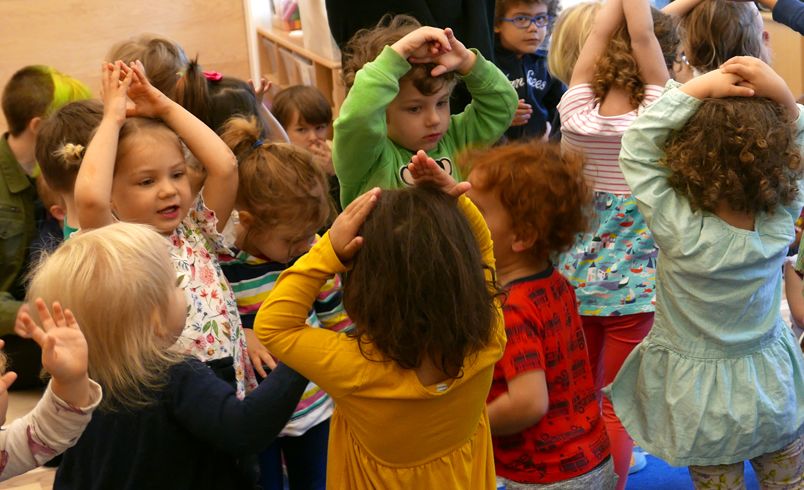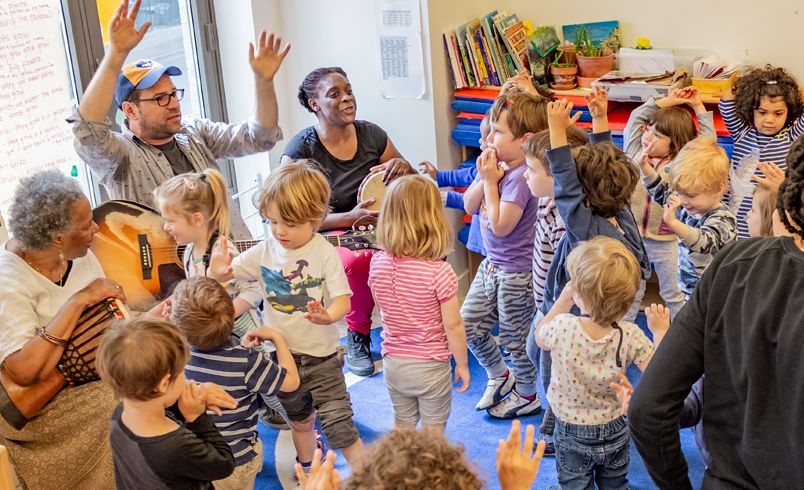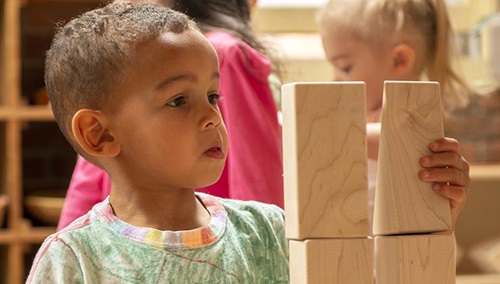In Defense of Active Learning
| December 2018I once heard a workshop leader say, “We often set up environments for children that are contrary to what we know about who and what they are.”
That’s fascinating to contemplate, isn’t it? Why would we do that? Even more fascinating is that we also often teach children in ways that are contrary to what we know about who and what they are.
Granted, much of that is dictated by policymakers who don’t seem to understand children any more than they might understand fruit flies. But much of it also can be attributed to “the way it’s always been done.” Sitting to learn and testing both fall into the latter category.
Early childhood education used to be the exception. In the past, based on what they knew about and observed in young children, teachers designed their programs to meet their students’ developmental needs. Play and active learning were considered key tools to accommodate those needs and to facilitate children’s education. Today, due to an increasing emphasis on “academics” and accountability, “instructional time” and worksheets are more the norm than active learning.
But consider the following: When children move over, under, around, through, beside, and near objects and others, they better grasp the meaning of these prepositions and geometry concepts. When they perform a “slow walk” or skip “lightly,” adjectives and adverbs become much more than abstract ideas. When they’re given the opportunity to physically demonstrate such action words as stomp, pounce, stalk, or slither—or descriptive words such as smooth, strong, gentle, or enormous—word comprehension is immediate and long-lasting. The words are in context, as opposed to being a mere collection of abstract letters. This is what promotes emergent literacy and a love of language.
Similarly, if children take on high, low, wide, and narrow body shapes, they’ll have a much greater understanding of these quantitative concepts—and opposites—than do children who are merely presented with the words and their definitions. When they act out the lyrics to “Roll Over” (“There were five in the bed and the little one said, ‘roll over’”), they can see that five minus one leaves four. The same understanding—and fascination—results when children have personal experience with such scientific concepts as gravity, flotation, evaporation, magnetics, balance and stability, and action and reaction.
When children are learning to count, they should not only have access to manipulatives; they can also be asked to place a certain number of body parts on the floor. If simple computation is the goal, after placing the designated body parts on the floor, they can be asked to subtract one part. How many are left? (Assessment in experiences like this is far more effective than in question-and-answer scenarios.)
To help them distinguish between a lowercase “b” and a lowercase “d,” invite children to take partners and together create first one and then the other.
Whatever the content area, there are ways for children to physically experience its concepts.
Noted author and educator, Eric Jensen, labels this kind of learning as implicit—such as learning to ride a bike. At the other end of the continuum is explicit learning—such as being told the capital of Peru. He asks, if you hadn’t ridden a bike in five years, would you still be able to do it? And, if you hadn’t heard the capital of Peru for five years, would you still remember what it was? Explicit learning may get the facts across more quickly than learning through exploration and discovery—through physically experiencing concepts—but the latter has far more meaning to children and stays with them longer. And shouldn’t those be our goals?
Neurophysiologist Carla Hannaford has stated that we learn 80 percent of what we experience physically and sensorially but only 10 percent of what we read. Shouldn’t the intent of education be for the children to actually learn?
And speaking of learning…the young child’s preferred mode is through movement. Why would we want to teach them in any way that isn’t their preference? Shouldn’t that be defense enough for active learning in the classroom?
This piece is adapted from my book What If Everybody Understood Child Development?









